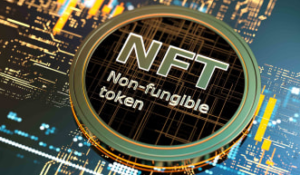NFTs for Charity: How Non-Fungible Tokens Change the Face of Charity
The trends today suggest that in modern times, NFTs or non-fungible tokens make their marks in the charity sector. Such digital assets help an individual or organization raise funds for various causes using concepts that are utterly new. Non-profits will engage wider audiences and provide a way for donors to contribute to their missions in unique ways by selling or auctioning one-of-a-kind pieces of digital art or collectibles.
But NFTs bring greater creativity and, moreover, complete transparency to transactions, enabling the donors to trust the organisations that money is utilized for its rightful purpose. Creative fundraising as a potential will grow as more charities start exploring this technology.
NFTs are a new exciting intersection of art and philanthropy, especially for both the artist and the charity involved. This allows nonprofits to embrace new digital revenue streams and to connect with supporters in new and creative ways.
Key Takeaways
- NFTs allow charities to consider new fundraising avenues.
- Transparency in NFT transactions helps build trust with donors.
- The world of digital art can significantly enhance charitable efforts.
NFTs in Philanthropy
NFTs are finally breaking into the philanthropic space. They open new ways of raising funds, complete with transparency and supporter engagement. The following sections outline the use of NFT in philanthropy, their growth in traction, and their advantages regarding clear tracking of donations.
Understanding NFTs
NFTs signify one-of-a-kind digital items that reside on blockchains. Unlike common cryptocurrencies, which are usually interchangeable-one for one, NFTs are not. Each token possesses special features making them unique and valuable. Their uniqueness is what attracts the interests of artists and collectors in making and selling these digital art pieces, music, and other creative forms.
Within philanthropy, organizations can sell NFTs for which proceeds go toward any variety of causes. Charities partner with artists in making special NFTs. This doesn’t just raise money but also raises much-needed awareness around pressing issues.
Crypto-Philanthropy on the Rise
Crypto-philanthropy is the use of cryptocurrency and blockchain for charity. The use of cryptocurrency has rapidly gained favor. This increased interest has opened up new ways of fundraising, including the acceptance of donations in digital forms. NFTs fall right into this category.
This has been well adopted by many organizations that sell NFTs for fundraising for projects, disasters, and community projects. Owning the idea of a single digital item wields a lot of power toward drawing donors interested in novel ways to give to charity.
Transparency and Traceability
Perhaps the most important advantage with the NFT market is the aspect of transparency involved. Every transaction is on the blockchain and can, therefore, be transparently viewed by any person as true. This aspect is useful especially in regard to philanthropy.
By buying an NFT, donors know where their money is going. Charities can show their work in real time through updates on how the money is used to make a difference in contributions. This creates transparency between the donor and organization.
In addition, transparency raises the bar on the occurrence of fraudulent activity. Donors can be more confident that their donation has been appropriated to what they actually intended for it to go to.
Impact on Charitable Giving
NFTs are going to disrupt the way people donate to charities by offering donors a range of ways in which they may give, and also different methods for nonprofits to raise money. This section takes a look at some benefits related to NFTs for donors and nonprofits, with real examples in action.
Benefits to Donors and Non-Profits
In fact, NFTs have many benefits for donors. For one, they can enjoy certain unique benefits-like owning exclusive artwork or collectibles-which in itself is supportive of a cause. And alone, this connection drives donations.
NFTs provide a new revenue stream opened to non-profits. They can sell digital art or experiences as NFTs and reach a different audience. Using blockchain technology, non-profits also ensure funds are utilized transparently, thereby trust with donors.
Moreover, NFTs create a sense of ownership among donors. Feeling part of the project motivates further support.
Real-Life Examples and Success Stories
Many charities have already explored using NFTs in innovative fundraising. Perhaps the most prominent example of this was that of the World Wildlife Fund. They auctioned NFT art for raising funds for conservation programs that showcase endangered species.
The Trevor Project sold NFTs created by famous artists. Their campaign brought in a good deal of money for raising awareness about LGBTQ+ mental health.
In both, NFTs have attracted new donors and given a modern approach to engaging supporters. These actions also drove conversations about charity work and social impact.

Also Read :
